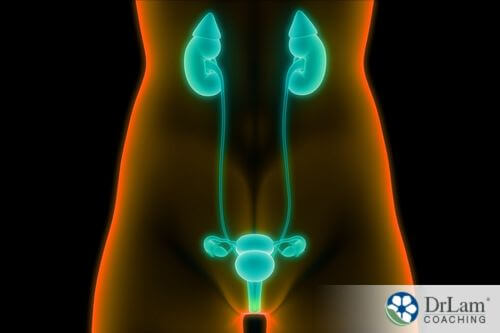 Cycle syncing is a new concept which promises to help women harness the power of their menstrual cycle. This practice revolves around understanding how your reproductive hormone fluctuations affect your mood and daily performance.
Cycle syncing is a new concept which promises to help women harness the power of their menstrual cycle. This practice revolves around understanding how your reproductive hormone fluctuations affect your mood and daily performance.
While understanding the phases of your cycle may not appear to be a big deal, some argue that it may have significant health benefits.
Cycle syncing refers to the process of adjusting your diet, exercise, and lifestyle choices to align with the stages of your menstrual cycle.
During your cycle, your hormones fluctuate, influencing your mood and behavior in different ways at each stage. It’s the process of changing your behavior to work with, rather than against, your hormone fluctuations.
The goal is to match your body's metabolic needs at each stage.
This concept was first proposed by Alisa Vitti, a functional nutritionist, and author, in her book "WomanCode." Her reasoning is that women are not the same as men. Even though they are expected to perform at the same level all of the time, women go through a 28-day cycle that affects their overall well-being. So, those who menstruate must take into account the ways in which their bodies change if they want to live their best lives.
There is currently little research to back up the behavior changes in cycle syncing. However, research does clearly show that estrogen and progesterone levels fluctuate during a woman's menstrual cycle. As a result, her mood, ability to cope with stress, and food preferences will vary.
In addition, studies have found that adjusting your diet and exercise routine to align with the various stages of your period can help you lose more weight.
Creator Alisa Vitti claims that she was able to recover from polycystic ovary syndrome (PCOS) by syncing her period. Cycle syncing, according to her and other professionals, such as author and nutritionist Tracy Lockwood Beckerman, can help:
It should be noted that these benefits of cycle syncing are only claims. They are not supported by scientific evidence.
Many women, however, experience emotional fluctuations during their periods and have found success dealing with it through cycle syncing. So, despite the lack of research, this practice may be a good way for a woman to better manage her emotions and productivity.
Everyone who menstruates could try cycle syncing. However, there are certain groups of people who may benefit more from this practice, such as women who:
Before you can start aligning your daily routine with your period, it is important that you know how your body works.
As a woman, it is normal for you to go through a monthly cycle known as menstruation. During this time, your uterus sheds the lining that was formed in preparation for pregnancy. This cycle typically lasts twenty-eight days. It ends on the first day of your period.
Your menstrual cycle is divided into four phases, each of which has a different effect on your hormones.
 This is when vaginal bleeding occurs due to shedding the uterine lining. During this stage, both your estrogen and progesterone levels are low. Hence, most women experience pain in the abdomen, migraines, discomfort, diarrhea, and nausea.
This is when vaginal bleeding occurs due to shedding the uterine lining. During this stage, both your estrogen and progesterone levels are low. Hence, most women experience pain in the abdomen, migraines, discomfort, diarrhea, and nausea.
According to the research, a woman is less likely to experience these symptoms if her bleeding is lighter. The menstrual cycle usually lasts between two and seven days.
This is the first phase of your menstrual cycle, and it involves the development of a follicle in the ovary.
Additionally, your body increases estrogen and progesterone, thickening the lining of the uterus. While some women experience cramps during this phase, it is unusual. It is more common to have increased energy and a better mood.
During this phase, an egg is released from a follicle in the ovary for intended fertilization. This phase usually lasts about three days.
Your levels of estrogen and progesterone will be at their highest. As a result, you may have strong sexual desires. This is the time when you are most likely to become pregnant.
This is the final phase of the menstrual cycle, which lasts ten days. If you become pregnant, your progesterone and estrogen levels will remain elevated.
If not, your body begins to reduce the production of these hormones, resulting in your period (shedding of the lining of the uterus). Many women experience anxiety, concentration problems, and brain fog during the luteal phase.
Premenstrual syndrome (PMS) is another prominent feature of this phase. Some women experience symptoms such as nausea, fatigue, difficulty sleeping, acne, bloating, and headaches. However, they are usually mild and resolve on their own.
It is important to note that taking hormonal contraceptives can disrupt your ovulation cycle. It may prevent some parts of the normal hormone cycle from occurring. So, if you are using birth control, you may need to talk to your doctor about how your cycle may have changed on birth control before attempting to practice cycle syncing.
To successfully sync your cycle, you must first understand how to effectively track your period. This will help you to determine which phase you are in.
Get in the habit of writing down the start of your cycle in a notebook, journal, or on a calendar every month. Try to also note when your cycle ends and when you might be ovulating.
There are also numerous apps that can assist you. Apps such as WomanLog Calendar, Glow, Flo, and Moody Monthly can help you easily track your period on your phone.
The majority of these apps are available for free. However, if you want all of the features, you will have to pay a premium. For those on a tight budget, your phone's normal calendar app will do just fine.
After mastering the habit of tracking all four phases of your menstrual cycle, you can start creating your cycle syncing guide.
Many studies have found that a woman's ability and desire to exercise is influenced by her menstrual cycle.
According to additional research, you are more likely to perform poorly on your workouts during your follicular phase. This isn't to say you shouldn't exercise at all. Just adjust your workout routines to fit your body’s needs.
 Working out increases blood circulation, which studies show can significantly reduce pain levels during the menstrual cycle.
Working out increases blood circulation, which studies show can significantly reduce pain levels during the menstrual cycle.
However, you should try to avoid exercising during your period because your body is already depleted. This is the best time to relax. If you do exercise, try low-intensity activities such as walking, relaxing yoga, or meditation.
You will have more energy at this point because your hormones are starting to rise. Hence, this is a good time to engage in some high-intensity activities such as cardio, spin cycling, and swimming.
Your hormone levels are at their peak during this phase. So, you should take advantage of it by working out as much as possible to boost your metabolism.
You can take it a step further by incorporating several high-intensity workouts into your daily routine. Circuit training, strength training, CrossFit, and vinyasa yoga are all great options.
On the other hand, it is important that you do not over-exercise during this period if you are trying to conceive. Excessive exercise, according to research, can lower levels of sex hormone-binding globulin (SHBG), which is required for proper fertility.
During this phase, your hormone levels decrease. It is a good idea to do less intense workouts like walking, yoga, and Pilates at this time. This also helps your body prepare for your next period.
Studies show that the level of nutrients in your body changes with your menstrual cycle. That is why cycle syncing requires that you pay attention to what you are eating at each phase.
Because of the bleeding, your iron and zinc levels will be lower during your period. Soups, stews, and bone broth should be included in your diet to replenish the nutrients you've lost. Other foods to consume while menstruating include:
You want to support your body during this time because you have just finished your period.
At this time, focus on foods that help metabolize estrogen, like probiotics and cruciferous vegetables. It is also important to consume fiber-rich foods in order to boost your metabolism. To replenish your body, you should also consume more iodine and iron-rich foods.
It is recommended that you consume the following foods during the follicular phase:
Your estrogen and progesterone levels are at their peak, and energy levels may be too. So, you want to make sure you're eating enough to keep your body in balance. Some foods to add to your diet include:
During the luteal phase, your body's metabolic rate increases, making you feel hungrier. This is because your body requires more energy to maintain balance.
 The best foods to consume during this phase are low-glycemic carbohydrates to meet your high-calorie needs. You should also eat foods that boost serotonin production to help you relax and feel happier.
The best foods to consume during this phase are low-glycemic carbohydrates to meet your high-calorie needs. You should also eat foods that boost serotonin production to help you relax and feel happier.
In addition, you should consume foods high in vitamin B and magnesium to help manage fatigue. Among them are:
Your nutrition and workout routines are not the only aspects of your life to focus on when you are cycle syncing. It is also important to learn how your feelings change and what you can do to take advantage of each phase.
It is normal to be moody during your period. Instead of trying to motivate yourself, now is a good time to focus on activities that are more calm and reflective. Journaling, meditation, and reading are all excellent ways to improve your mood.
This stage is associated with feelings of creativity and logical reasoning. You might find yourself thinking about that big idea you said you wanted to start. During the follicular phase, you may also notice that your sexual drive is returning.
As your hormones peak during ovulation, you may feel the need to socialize. This is a good time to attend more events and network with others. While the majority of women feel energized during ovulation, research shows that some women experience mild cramps. In addition, because you are at your peak fertility, your sex drive is likely to peak.
Energy levels might be falling at this point, but his is a good time to get things done. You should use this time to concentrate your efforts on being productive and completing tasks. Your libido will decrease as your hormones decline during the final stage of your cycle.
Aligning your menstrual cycle with your lifestyle can help you live a healthier life. However, if you want to improve your overall well-being, you must learn how to manage stress.
According to research, excessive stress causes irregular periods. It can also worsen PMS symptoms like anxiety, fatigue, mood swings, irritation, and weight gain.
Better stress management will allow you to relax and reconnect with your body. Failure to do so can result in Adrenal Fatigue Syndrome (AFS). This is a stress-related condition that affects millions of people all over the world.
Your body has a built-in mechanism for coping with stress called the NeuroEndoMetabolic (NEM) Stress Response System. It is a complex system composed of multiple organs and six circuits, one of which is the hormonal circuit. All of these components work together to keep the body in balance. When you are stressed, your NEM activates the adrenal glands, which produce the anti-stress hormone cortisol.
 Long-term stress causes the adrenal glands to overproduce cortisol. As a result, the body is unable to maintain hormonal balance. This can make your adrenal glands tired and unable to make enough cortisol or other key hormones which could lead to AFS. The adrenals are part of the Hormone Circuit of the NEM, which includes the ovaries, but these organs share several precursor hormones. Too much cortisol, for example, may mean less estrogen and progesterone.
Long-term stress causes the adrenal glands to overproduce cortisol. As a result, the body is unable to maintain hormonal balance. This can make your adrenal glands tired and unable to make enough cortisol or other key hormones which could lead to AFS. The adrenals are part of the Hormone Circuit of the NEM, which includes the ovaries, but these organs share several precursor hormones. Too much cortisol, for example, may mean less estrogen and progesterone.
This can lead to PMS, hormone imbalance, and a host of other symptoms. When your hormone levels are too low, your physical and mental performance may decline. You may also have trouble concentrating and staying on task.
If you have AFS, addressing it and lowering stress is key to restoring hormone imbalances and returning your body to its natural rhythms.
Many women go their whole lives without ever understanding how their bodies change each month. This can lead to stress and overwhelm.
However, cycle syncing and matching your menstrual cycle to your daily routine may help you perform and feel better.
Although there is no research on cycle syncing, you can experiment to see if it works for you. Or if cycle syncing does work for you, just concentrate your efforts on eating healthily, listening to your body while exercising, and making daily plans. Also, make time to manage your stress levels.
If you would like to know more about how your hormones change cyclically and what can affect them, the team at Dr. Lam Coaching can help. We offer a free** no-obligation phone consultation at +1 (626) 571-1234 where we will privately discuss any issues you may have. You can also send us a question through our Ask The Doctor system by clicking here.
Some argue that syncing your cycle can help you reduce PMS symptoms such as anxiety and weight gain. Others claim that this practice can reverse PCOS. However, these are just claims because there isn't much evidence to back them up. You should test it out to see if it suits your needs.
